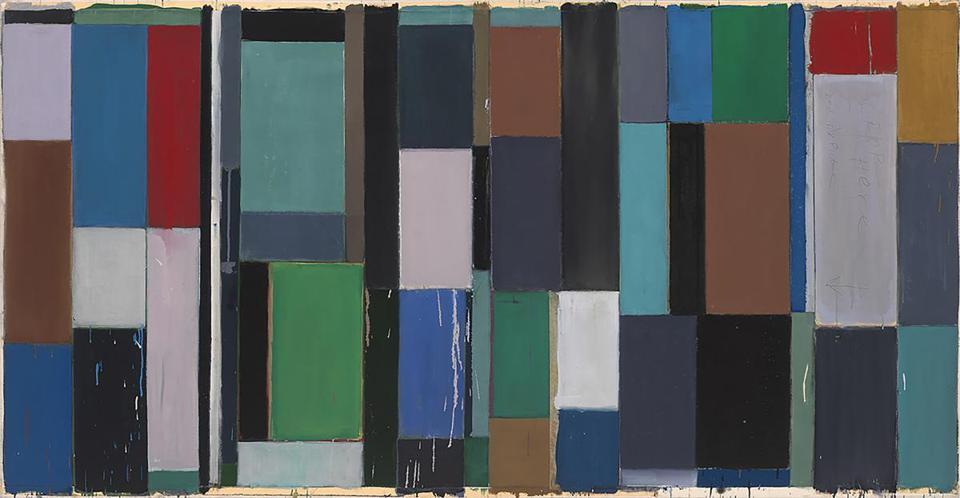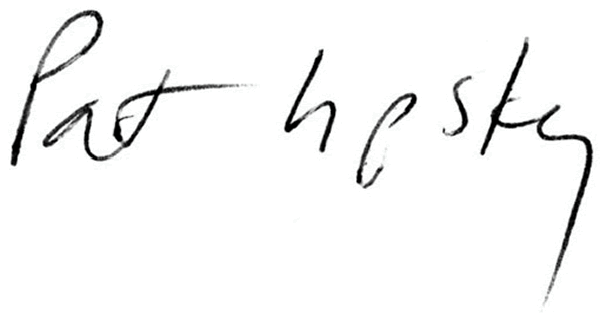Artists committed to technique and color

80 1/8" x 41 7/8"
Oil, alkyd, acrylic on canvas
For lovers of hardcore abstraction, images are the emperor’s new clothes. With no picture upon which to pin story or meaning, we’re left with colors, gestures, forms, and the relationships among them. There’s no storytelling in a good abstraction — just the electric current of visual experience.
“Pat Lipsky: Twenty Years” at ACME Fine Art and “Peter Tollens: Oil and Water” at Miller Yezerski Gallery spotlight how nuance, technique, and wisdom go into making abstract paintings that command attention.
Lipsky’s show traces the evolution of the geometric stripe paintings that dominate her current work. The stripes are lush and painterly, never hard-edged, yet in most of these pieces, clean and lucid.
Less so in “Builder,” from 1999, which instead delights in revealing the artist’s process. Lipsky leaves strips of tape along the top and bottom, where she had likely intended to make clean edges but ended up preferring the seep and drip of color onto the tape. Paint streams out of bounds in this syncopated grid, dripping from one color onto the next. Lipsky scrawled “crop here” in pencil over one block, then thought better of the edit and left the notation. The piece is a record of its making.
After that, Lipsky’s paintings grow at once more restrained and more voluptuous. They share a format of long columns, with each column broken into two colors. The horizontal break rises and falls across the canvas, giving the paintings a piston-like energy.
“Red River Valley I” and “Red River Valley VI” hang side by side. Each features a limited palette of red, blue, black, and gray. Each features broad columns alternating with narrow ones. But if that’s all you see, look again.
None of the proportions are the same. Nor are any two passages of any one color. Lipsky is primarily a colorist; she builds her hues up, using up to 50 undercoats. Color relationships shift. Some ping, others throb. Everything is just off-balance enough to make you wobble — which you can see Lipsky’s hand-painted edges do, if you look with care. These are breathing, organic works, dressed in the clothing of geometric abstraction.
